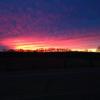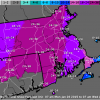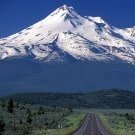All Activity
- Past hour
-
Yesterday's storm over the airport dropped 1.04 in 17 minutes. An absolute car wash of a storm.
-
Just got back in after watering and man is it hot already. At least no more mowing needed as the grass is completely dormant. Looking forward to spending hours out on the deck starting this weekend!
-
Good point. Thoughts last week of temps approaching the century mark down here have ended up in the 93-95 range in reality. It helped it feel so much more refreshing to be outside.
-

July 2025 Obs/Disco ... possible historic month for heat
ineedsnow replied to Typhoon Tip's topic in New England
-

July 2025 Obs/Disco ... possible historic month for heat
Brewbeer replied to Typhoon Tip's topic in New England
July will be remembered more for the humidity than anything else in my book. More days of AC required than any other July in recent memory. -

E PA/NJ/DE Summer 2025 Obs/Discussion
donsutherland1 replied to Hurricane Agnes's topic in Philadelphia Region
Philadelphia has reached 80° or above for the 31st day this month. That ties the July mark of 31 days. It is also the third consecutive year with 31 such days. The old record of two consecutive years was set during 2010-2011. -
July 2025 Discussion-OBS - seasonable summer variability
SACRUS replied to wdrag's topic in New York City Metro
9AM clouds pushing in slowly EWR: 80 NYC: 83 LGA: 81 JFK: 82 New Brnswck: 83 TEB: 83 -

July 2025 Obs/Disco ... possible historic month for heat
CoastalWx replied to Typhoon Tip's topic in New England
Logan won’t be due to so many sea breezes. Look at ORH, Blue Hill, and BDL. Maybe PVD too although I think they may be running cool still? Throw in CON and MHT too. I think many are close to top 5. It was a warm one. -

July 2025 Obs/Disco ... possible historic month for heat
Modfan2 replied to Typhoon Tip's topic in New England
Currently sunny down here at Yagoo Valley in RI -
July 2025 Obs/Disco ... possible historic month for heat
Typhoon Tip replied to Typhoon Tip's topic in New England
yeah i was pretty sure it was that late june one just curious. actually got to wondering how often it is to get 1k high orh to do that just in general - as in return rate. -

July 2025 Obs/Disco ... possible historic month for heat
ineedsnow replied to Typhoon Tip's topic in New England
I thought there was a bit more.. but even so my point is he didn't get his top 5 and this morning he was saying it was and how wrong I was. But I admit it was hotter than I thought.. He will never admit he was wrong. -

E PA/NJ/DE Summer 2025 Obs/Discussion
JTA66 replied to Hurricane Agnes's topic in Philadelphia Region
I know nothing about modeling, but it seems they struggle with convection. It's a day to pay more attention to Mt. Holly and the radar than short-range models. Already 82F at 9am. Will probably make another run at 90F if cloud cover holds off long enough. -

July 2025 Obs/Disco ... possible historic month for heat
Brewbeer replied to Typhoon Tip's topic in New England
75/69, rumbling to my southwest, a couple of sprinkles have already moved through -
IT When you look back at the great golfers of the 60s and 70s they played with wooden clubs, the irons weren't as advanced as today and those guys could hit the ball a long ways.
-

July 2025 Obs/Disco ... possible historic month for heat
Torch Tiger replied to Typhoon Tip's topic in New England
A for effort -

July 2025 Discussion-OBS - seasonable summer variability
donsutherland1 replied to wdrag's topic in New York City Metro
Bridgeport has now reached 80° this morning. That is the 29th 80° or above day this month. That ties the July record of 29 days, which was set in 1966 and tied in 1994. -
July 2025 Discussion-OBS - seasonable summer variability
SACRUS replied to wdrag's topic in New York City Metro
-
July 2025 Discussion-OBS - seasonable summer variability
SACRUS replied to wdrag's topic in New York City Metro
inches closer slowly south -
July 2025 Discussion-OBS - seasonable summer variability
SACRUS replied to wdrag's topic in New York City Metro
Records: Highs: EWR: 103 (1954) NYC: 102 (1933) LGA: 97 (1954) JFK: 95 (2002) Lows: EWR: 56 (1932) NYC: 57 (1914) LGA: 62 (1956) JFK: 58 (1964) Historical: 1715: Spanish treasure ships, returning from the New World to Spain, encountered a hurricane during the early morning hours on this day. Eleven of the twelve ships were lost near present-day Vero Beach, Florida. 1769: Hail fell 12 inches deep and lasted for 30 hours at Scituate, MA. (Ref. Wilson Wx. History) 1861: Cherrapunji, India set a world monthly rainfall record with a total of 366.14 inches. Cherrapunji also holds the world record rainfall for a 12-month period: 1,041.78 inches from August 1, 1860 to July 31, 1861. (Ref. Wilson Wx. History) 1891: A six day streak with high temperatures at or above 110° finally came to an end at Fresno, CA. This is their longest such streak on record. (Ref. Wilson Wx. History) 1906: Everyday this month at Bakersfield, CA the high temperature was at or above 100°. This is the only month on record where that occurred there. (Ref. Wilson Wx. History) 1931: Fresno, CA reached triple digit highs 28 days during the month. This tied a record for the most 100 degree plus days with July 1906. (Ref. Wilson Wx. History) 1936: A tropical storm moved in from the Bahamas and crossed extreme south Florida into the Gulf of Mexico. The storm strengthened into a hurricane and made landfall near Ft. Walton Beach, FL early on this date. Winds gusted to 125 mph and storm surge reached 6 feet. Four people died. (Ref. Wilson Wx. History) 1945: Richmond, Virginia had 18.21 inches during July the highest monthly total rainfall on their records. (Ref. Richmond Weather Records - KRIC) 1949: Lightning struck a baseball field at Baker, Florida during a game. The shortstop and third baseman were killed instantly. 1971: Unusually cold air settled into the southern Plains. Low temperatures were 15 to 20 degrees below normal, ranging from the mid 40s in northeast Oklahoma, the lower 50s in central sections, and near 60 in the southwest. Oklahoma City recorded a low of 53°, their coldest temperature ever observed in July. (Ref. Wilson Wx. History) 1976 - A stationary thunderstorm produced more than ten inches of rain which funneled into the narrow Thompson River Canyon of northeastern Colorado. A wall of water six to eight feet high wreaked a twenty-five mile path of destruction from Estes Park to Loveland killing 156 persons. The flash flood caught campers, and caused extensive structural and highway damage. Ten miles of U.S. Highway 34 were totally destroyed as the river was twenty feet higher than normal at times. (David Ludlum) (The Weather Channel) 1980: Record heat continued across the middle of the country. Daily record highs included: Columbia, MO: 108°, Tulsa, OK: 108°, Oklahoma City, OK: 107° and Springfield, MO: 104°. Dodge City, KS recorded 22 days of 100° or higher, with 17 of those days in a row with temperatures of 102° or higher. This was the driest July of the 20th century across Oklahoma. The statewide average rainfall was less than a half an inch, with many locations receiving no rain. Along with the dry weather, it was very hot, with several high temperature records broken. An estimated 37 people died across Oklahoma due in part to the extreme heat. (Ref. Wilson Wx. History) 1981: Springfield, IL reported a total of 10.76 inches of rain during the month, establishing a July record. Much of the total was because of two major rainstorms during the month, one of which produced 3 inches of rain, and the other, 4.33 inches. (Ref. Wilson Wx. History) 1983: Oklahoma is typically hot and dry during the summer, but July 1983 was extremely dry. Only a trace of rain fell in Oklahoma City, making it their driest July on record. The driest months ever recorded in Oklahoma City were January 1986 and August 2000, when not even a trace of moisture fell. (Ref. Wilson Wx. History) 1986 - The temperature at Little Rock, AR, soared to 112 degrees to establish an all-time record high for that location. Morrilton, AR, hit 115 degrees, and daily highs for the month at that location averaged 102 degrees. (The Weather Channel) 1987 - The deadliest tornado in 75 years struck Edmonton, Alberta, killing 26 persons and injuring 200 others. The twister caused more than 75 million dollars damage along its nineteen mile path, leaving 400 families homeless. At the Evergreen Mobile Home Park, up to 200 of the 720 homes were flattened by the tornado. (The National Severe Storms Forecast Center) 1987 - Afternoon highs of 106 degrees at Aberdeen, SD, and 102 degrees at Ottumwa, IA, and Rapid City, SD, established records for the date. It marked the seventh straight day of 100 degree heat for Rapid City. Baltimore, MD, reported a record twenty-two days of 90 degree weather in July. Evening thunderstorms produced golf ball size hail at Lemmon, SD, and wind gusts to 80 mph at Beulah, ND. (The National Weather Summary) (Storm Data) 1988 - Twenty-one cities in the north central U.S. reported record high temperatures for the date, including Sioux City, IA, with a reading of 107 degrees. The reading of 105 degrees at Minneapolis, MN, was their hottest since 1936. Pierre and Chamberlain, SD, with highs of 108 degrees, were just one degree shy of the hot spot in the nation, Palm Springs, CA. (The National Weather Summary) 1989 - Overnight thunderstorms soaked eastern Kansas and western Missouri with heavy rain. Four and a half inches of rain was reported at Nevada, MO. Evening thunderstorms in Oklahoma produced wind gusts to 75 mph at Covington. Six cities in the north central U.S. reported record high temperatures for the date, including Williston, ND, with a reading of 105 degrees. (Storm Data) (The National Weather Summary) 1991: July became the wettest month ever with 17.46 inches of rain at Columbia, SC. The old record was 16.72 inches set in August 1949. (Ref. Wilson Wx. History) 1992: Boston, Massachusetts this year had no 90 °F or higher temperatures for the year. (Ref. NOAA Boston Weather Events) Flint, MI ended their coolest July on record, while Columbus, OH, Buffalo, NY and Williamsport, PA experienced their wettest. Columbus had a record 29 cloudy days and 17 days with thunderstorms during the month. (Ref. Wilson Wx. History) 1993: The 30.3 inches of rain that fell during the month at Worth County, Missouri was nearly equal to the amount of rainfall that the area would receive in an entire year. Record precipitation that occurred across a good portion of the mid-Mississippi valley during the summer fell as far east as parts of central Illinois. During the month of July, Canton reported 12.66 inches of rain and Peoria reported 10.15 inches, both setting a record for the month. Springfield's 9.46 inches was good enough for the 2nd wettest July on record. Sioux Falls airport received 7.86 inches. That ranks July 1993 as the third wettest July on record in Sioux Falls. The high total of July 1993 also contributed to the wettest summer (June, July & August) on record in Sioux Falls with 17.39 inches of rain. Crop growth was very slow, with corn and soybeans two weeks to one month behind their normal growth by the end of July in Iowa. Losses in the corn crop amounted to nearly $1.389 billion, losses in soybeans were around $941 million dollars and oat damage was about $26 million dollars. (Ref. Wilson Wx. History) 1994: Philadelphia, PA ended the month with 10.42 inches of rain, breaking the monthly record of 10.30 inches set in July 1919. (Ref. Wilson Wx. History) 1996: A major hailstorm struck Cheyenne, WY with hail reported up to 2.5 inches in diameter. Damage was estimated to be about $3.4 million dollars. (Ref. Wilson Wx. History) 2009: Hail to golf ball size pummeled Prairie Dog State Park near Norton, KS. The hail shattered windows in 60 vehicles and caused significant damage to 40 RVs/campers; park cabins were also damaged. Total damage was estimated to be $1 million. (Weather Guide Calendar with Phenomenal Weather Events 2011 Accord Pub. 2010, USA) 2010: The heat of July 2010 was brutal and relentless !! Tied for hottest month of all time in Washington (83.1 °F) and at BWI (81.5 °F) (Until 2011 see 2011 below) Positive monthly departures at all major airports: + 3.9 °F at DCA, +5.0 °F at BWI and +3.8 °F at IAD Ref. July PRESTO Page 1 Richmond had its hottest July with an average temperature of 82.8 °F; the previous record was 82.4 °F set in 1993. The hottest month Richmond has ever felt was August of 1900 with a mean temperature of 82.9 °F which was only 0.1 °F higher. But this July was preceded by the hottest spring and hottest June on record. Richmond's average temperature for both June and July was the hottest on record at 82 °F. Norfolk also set a record for those two months at 81.6, according to the Weather Service. (Ref. Richmond Weather Records - KRIC)July temperatures -- Richmond had 24 days 90 °F or higher and the 113 year record for July is 26 days in 1993. Richmond had 18 days 95 °F or higher setting a new 113 year record for July the most for any month on record. Norfolk, VA had 13 days 95 °F or higher tying their record for July. Richmond had 7 days with 100 °F or higher and the previous 113 year record, the most for any month, was 6 days in July 1977 and 1963. The 105 °F record temperature on the 24th and 25th also ties the highest maximum temperature ever recorded in July in Richmond. The Airport had ten days in 2010 with the temperature 100 °F or more; the old record was nine set in 1954. Rainfall total of only 2.01 inches for June and July made it the driest June and July on record. (Ref. Richmond Times-Dispatch Newspaper Thursday, August 26, 2010)(Ref. Richmond Weather Records - KRIC) DCA soared to a record 102 °F on the 7th and 101 °F on the 24th. BWI recorded record high temperatures on 4 days: 6th (105 °F), 7th (101 °F), 24th (101 °F) and 25th (100 °F) On the 6th, BWI soared to 105 °F; 2nd hottest day ever in Baltimore (107 °F, 7/10/36); at or above 100 °F at BWI on 5 days, most on record At or above 90 °F on 44 days in 2010 at DCA, most number of days through July on record. Ref. July PRESTO Page 1 2011: Hottest average monthly temperatures on record at all three major airports: 84.5 °F at DCA (+5.3 °F); 81.7 °F at BWI (+5.2 °F); and 81.0 °F (+5.3 °F) at IAD. On 22nd, BWI’s high of 106 °F was second highest temperature on record; IAD's record maximum of 105 °F was hottest temperature on record; DCA’s 104 °F on 30th tied for the 5th highest reading in Washington; Heat Index values reached 121 °F at DCA, 118 °F at BWI and 117 °F at IAD due to oppressive humidity. DCA recorded 7 days with minimums at or above 80 °F, including a record 4 consecutive days from 21st-25th BWI observed 4 days with highs at or above 100 °F ; 3 such occurrences at DCA and IAD DCA reported 25 days with highs at or above 90 °F; BWI and IAD, 24; setting records at all three locations Ref. Taken from the Sterling Reporter Volume 10, Issue 3 National Weather Service Baltimore MD/Washington DC Forecast Office Summer 2011 Ref. July 2011 PRESTO Page 1 2017: The famously fiery national park 100 miles to the west set an unpleasant record in July with an average temperature of 107.4 degrees. That ranks as the hottest month ever measured in the Western Hemisphere, according to the National Weather Service. Christopher Burt thinks it might be a world record as well. The weather historian for Weather Underground said he only knows of one monthly average that’s higher — 107.44 degrees recorded in July 2014 at a military base in northern Saudi Arabia — but that measurement has been discredited because it apparently didn’t include overnight temperature readings. “So far nobody’s come up with another figure that’s higher than Death Valley’s,” Burt said. Andy Gorelow, a meteorologist with the National Weather Service in Las Vegas, said unusually hot conditions at night were largely responsible for the new monthly record in Death Valley. The average low at the park’s official weather station in Furnace Creek, California, was 95.1 in July, the warmest of any month on record by more than a full degree. The average high in Death Valley last month was 119.6 degrees. July 7 was the single hottest day, with a high of 127. The temperature never dropped below 89 all month. (Death Valley Just Had Its Hottest Month July 2017 Elizabeth Shogren NEWS Aug. 8, 2017) (The Actual Temperatures for the Hottest Month of July 2017) -

July 2025 Obs/Disco ... possible historic month for heat
dendrite replied to Typhoon Tip's topic in New England
There’s not that much disparity. ORH +2.5/+3.1 BOS +2.5/+1.7 PVD +1.2/+1.6 CON +3.9/+2.1 -

July 2025 Obs/Disco ... possible historic month for heat
DavisStraight replied to Typhoon Tip's topic in New England
Moving day today, been waiting for this day for weeks. I was hoping for a nice day but doesn't look like it in Maine. -

Central PA Summer 2025
Mount Joy Snowman replied to Voyager's topic in Upstate New York/Pennsylvania
Low of only 75. Exciting day ahead. While the humidity has certainly lived up to the hype, the temps at the official stations have come in a good bit lower than expected the last couple of days. -
July 2025 Discussion-OBS - seasonable summer variability
jm1220 replied to wdrag's topic in New York City Metro
Not many clouds here. Many of us will make a run at 90 again until it clouds up.








